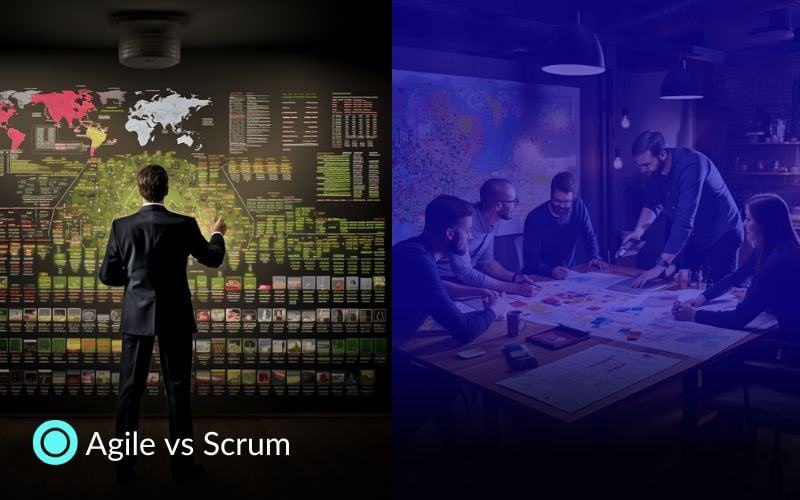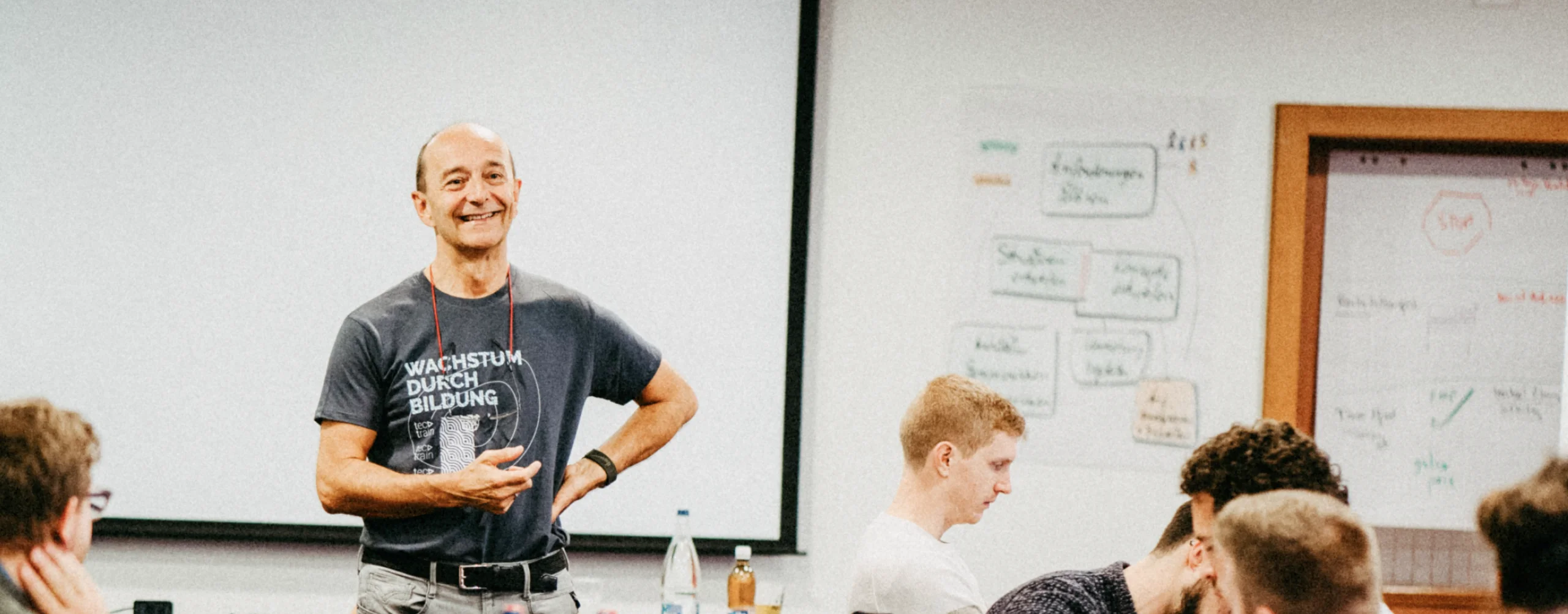The Evolution of Agile: Understanding Scrum and Beyond
In the ever-evolving technological landscape, companies have felt the pressing need to adapt and innovate. To stay ahead and cater to market demands, many have embraced agile methodologies. These methodologies are not just about process tracking or project management; they're about reshaping organizational structures to prioritize product quality, customer satisfaction, and other pivotal factors.
The Agile Manifesto, established in 2001, laid the foundation for these changes by outlining the core values and principles of Agile. Over the years, various frameworks have emerged to bring the Agile philosophy to life.
Among these, Scrum stands out as a prominent framework that embodies agile principles. But it's not alone. Just like other Agile Frameworks such as SAFe (Scaled Agile Framework), LeSS (Large Scale Scrum), Kanban, and Extreme Programming (XP) have also gained traction. Each of these frameworks, rooted in the fundamental principles of Agile, offers unique solutions to diverse project management challenges.
What is Agile?
Agile is a principles-based approach. Agile aims to make the project management process simpler, more flexible, and more iterative in order to offer the customer a higher level of innovation and value as well as higher performance (in terms of cost, time, and quality). So it is a way of thinking in project development that mainly aims at teamwork and customer loyalty as well as executing projects quickly and flexibly.
This approach enables projects to be carried out even under changing conditions and ensures that customer needs are continuously checked. Agility allows teams to focus on continuous improvement and encourages them to be mindful of projects as a whole.
Benefits of Agile:
- Flexibility: Easily adapt to changes, even late in the project.
- Feedback Loop: Regular check-ins mean issues are spotted and fixed quickly.
- Customer Satisfaction: Delivering frequent updates means the product aligns closely with customer needs.
- Better Collaboration: Teams work closely together, improving communication.
- Reduced Risks: Regular reviews mean fewer surprises at the end.
- Faster to Market: With a focus on key features first, products can be launched more quickly.
- Continuous Improvement: Teams constantly refine and improve their processes.
- Clearer Focus: By prioritizing tasks, teams know what's most important.
- Waste Reduction: Only the necessary features are developed, reducing wasted effort.
- Increased Quality: Regular testing means better end products.
Simple, right? Agile is all about adapting, improving, and delivering quality products efficiently.
What is special about Agile?
It is based on the Agile Manifesto which has four core values - Individuals and Interactions, Working Software Products, Customer Satisfaction, and Changing Requirements. While the Agile Manifesto provides a set of excellent values and principles that guide the way of working, it does not explain how teams organize their work or how practices should be implemented.
As a result, many frameworks have emerged to describe how to embody the principles of the Agile Manifesto in real life. Teams that follow either of these approaches describe their methodology as agile. They use a framework or a specific method to integrate agile principles into a company or project. One of the best-known of these is Scrum. Agility can be viewed as a general approach to improving team productivity.
Agile project management is a business philosophy aimed at adapting to changes in a business environment with high uncertainty, maximizing the value of the output to be produced and thus increasing customer satisfaction. In order for this philosophy to be implemented, organizations must understand this logic and transform the philosophy into a method with concrete tools.
What is Scrum?
Scrum - What is it? Scrum is an agile framework in which people can tackle complex and adaptable problems while developing productive and creative products of the highest possible value. Scrum is part of the agile mindset. That means it ultimately follows the same guiding principles.
It is also a flexible method used for project development. It's a framework that can be customized to fit the needs of any company or team. This way a high-quality product can be presented.
Scrum is based on empiricism as a philosophy and it is important to ensure transparency, observation, and adaptation for the Scrum method to work properly. In addition, this framework aims to realize projects in a short time and values teamwork. Scrum consists of three key components of projects: the Development Team, the Scrum Master, and the Product Owner.
The Scrum Master is responsible for guiding the team's work and removing roadblocks to agile transformation. The Product Owner, on the other hand, determines the purpose and needs of the project.
Benefits of Scrum:
- Structured Approach: Clear roles and responsibilities for everyone.
- Short Cycles: Work is broken into manageable chunks called sprints.
- Quick Feedback: Regular reviews after each sprint to check progress.
- Team Collaboration: Daily meetings help everyone stay on the same page.
- Adaptability: Easy to make changes based on feedback.
- Transparency: Everyone knows what's going on, reducing surprises.
- Improved Productivity: Focused sprints mean more gets done.
- Clear Goals: Each sprint has a specific aim, so the team knows what to target.
- Continuous Improvement: Teams reflect and tweak their process after each sprint.
- Customer Involvement: Regular input ensures the product meets real needs.
In a nutshell, Scrum offers a clear, flexible, and collaborative way to tackle projects efficiently.
What is special about Scrum?
At the heart of Scrum is the self-directed team. This team adheres to Scrum values, Scrum roles, Scrum artifacts, and Scrum enabling tools. If you consider that the Scrum team is a car: if the development team car engines and wearing parts were the human behind the wheel, the product owner is the transmission and the engine oil that allows the engine and other transmission organs to move smoothly, the signals on the instrument panel, the windshield wipers that help the driver keep track are the scrum master.
The energy required to run this car is agile. Operation without fuel is not possible. So without the agile mindset, Scrum in itself means nothing.
Scrum is a framework for agile project management practices. Scrum-based development projects are divided into small structures called sprints, which consist of three components: product backlogs, sprint backlogs, and sprint goals.
With each sprint, a specific feature is defined, developed, and tested. Depending on the complexity of the project, each sprint lasts two to three weeks. When a business needs changes that warrant a code change, it's quicker and easier to find it in the sprint backlog rather than repeating the entire software development lifecycle like the waterfall method.
Scrum vs. Agile: Navigating the IT Training Landscape
Ever felt like you're in a maze when it comes to IT methodologies? You're not alone! With the ever-evolving landscape of IT training and certifications, it's crucial to understand the differences and similarities between popular frameworks like Agile and Scrum. Let's embark on this enlightening journey together!
1- The Tale of Two Methodologies:
Much like the comparison between TOGAF and iSAQB on Tecnovy, Agile and Scrum often find themselves mentioned in the same breath. But what sets them apart?
- Agile: A philosophy that emphasizes flexibility, collaboration, and customer feedback. It's like the guiding star for software development, illuminating the path but not dictating the journey.
- Scrum: A concrete methodology under the Agile umbrella. Think of it as a ship navigating the Agile seas, with specific roles, rituals, and guidelines.
2- Stories from the IT Frontlines:
- Jane, the IT professional who was always ahead of her deadlines? She swears by the Agile Manifesto's principles, especially its emphasis on customer collaboration and responding to change.
- Then there's Mike, the Scrum Master at a leading tech firm. He loves how Scrum's sprints allow for regular feedback and adjustments, ensuring the team is always on the right track.
3- Breaking Down the Differences:
Drawing insights from sources like Simplilearn and Guru99, here's a distilled comparison:
- Foundations: Agile is a mindset, while Scrum is a framework.
- Documentation: Agile values working software over comprehensive documentation, whereas Scrum provides a detailed guide on its implementation.
- Roles: Agile emphasizes self-organizing teams. In contrast, Scrum has defined roles like the Scrum Master and Product Owner.
4- The Common Ground:
Despite their differences, both Agile and Scrum aim for continuous delivery of valuable software, fostering collaboration and embracing change.
In the vast ocean of IT methodologies, understanding the nuances between Agile and Scrum can set you on the path to success. Whether you're an aspiring IT professional or a seasoned expert, embracing these methodologies can elevate your projects and career to new heights.
Agile vs. Scrum: A Comprehensive Guide to Making the Right Choice
In the ever-evolving realm of software development, choosing the right approach is crucial. "Scrum master vs agile coach" is a debate you might have come across, but what do these terms truly signify, and how do their roles and responsibilities diverge in real-world scenarios? Let's delve deeper to unravel the distinctions between them.
1. Philosophical Roots vs. Practical Framework:
- Agile: At its core, Agile is a philosophy. It's a set of values and principles outlined in the Agile Manifesto. It emphasizes flexibility, collaboration, and customer feedback. Think of Agile as the belief system or the "why" behind a particular approach.
Imagine a startup wanting to create a revolutionary app. They adopt the Agile mindset, focusing on iterative development, frequent customer feedback, and flexibility to adapt to changes.
- Scrum: Scrum, on the other hand, is a specific methodology that operates under the Agile umbrella. It provides a structured approach with defined roles, events, and artifacts. It's the "how" to implement the Agile philosophy.
The same startup decided to use Scrum to implement their Agile approach. They organize work into sprints, have daily stand-up meetings, and roles like Scrum Master and Product Owner are defined.
2. Documentation and Guidance:
- Agile: The Agile Manifesto is concise, focusing on broad values and principles. It doesn't provide a step-by-step guide but rather a mindset to adopt.
- Scrum: Scrum offers a detailed guide on its implementation through the Scrum Guide. It outlines specific practices, roles, and ceremonies.
Consider a chef (Agile) who believes in using fresh, local ingredients. The belief is clear, but how to make a dish isn't specified. Now, a specific recipe (Scrum) using those ingredients provides a clear method to create a particular dish.
3. Roles and Responsibilities:
- Agile: Emphasizes collaboration among cross-functional teams. There aren't defined roles in the Agile philosophy itself.
- Scrum: Has specific roles like the Scrum Master (facilitator), Product Owner (visionary), and the Development Team (implementers).
In a film crew, Agile would emphasize collaboration between departments (like sound, lighting, and acting). Scrum would define roles like the Director (Product Owner), Assistant Director (Scrum Master), and the Crew (Development Team).
4. Feedback and Iterations:
- Agile: Encourages continuous feedback and iterative development. The frequency and method aren't strictly defined.
- Scrum: Organizes work into "sprints," which are time-boxed iterations, usually lasting 2-4 weeks. At the end of each sprint, a potentially shippable product increment is delivered, allowing for regular feedback.
Think of writing a book. An Agile approach might involve writing chapters and getting feedback continuously. Using Scrum, the author might set a goal to complete specific chapters in a set time (sprint) and then seek feedback.
5. Flexibility vs. Structure:
- Agile: Being a philosophy, Agile is inherently flexible. It provides a mindset, but the implementation can vary.
- Scrum: While Scrum is adaptive, it has a structured approach. Deviating from the defined practices means you're not doing "pure" Scrum.
Consider building a house. An Agile approach emphasizes a comfortable, functional home. Scrum would be like a specific architectural style (e.g., Victorian) with defined characteristics.
Deciding between an agile coach and a scrum master isn't a binary choice. The scrum master is a role that embodies the Agile principles in a specific manner. Your decision hinges on the level of guidance and structure you desire for your project. By grasping the subtle differences between an agile coach vs scrum master, you can make a well-informed choice that aligns with your project's objectives.
Real-life Success Stories
The Spotify Story
Before Spotify became the music streaming giant we know today, it faced challenges in coordinating teams and delivering features quickly. They turned to Agile. By organizing their teams into "squads", each focusing on specific features, they ensured faster delivery and better communication. This Agile approach allowed Spotify to release features like "Discover Weekly" which users love, propelling them to the top of the music streaming world.
Slack's Rise to Stardom
Before Slack became the go-to communication tool for teams, it was just a side project for a gaming company. The turning point? Implementing Scrum.
By using Scrum's iterative approach, they rapidly tested, received feedback, and improved. This allowed them to pivot from a gaming company to a communication platform. Now, when you hear teams raving about Slack, remember - Scrum played a big part in its success!
Conclusion
When comparing the "agile methodology vs scrum," it's evident that both have their unique strengths and limitations, suitable for varied scenarios. While Scrum is a distinct method within the Agile umbrella, numerous other Agile techniques can be employed based on the context and needs.
If you want to learn more about agile methods and how they can be used in project management, we recommend our "Scaled Agile Framework" page. Here you will find various SAFe courses, including our "SAFe Scrum Master" course, which teaches you the basics of Scrum and prepares you for the SAFe Scrum Master certification.
And if you want to further your education, we have a wide range of training courses and certifications on our "Academy" page that can help you expand your knowledge and skills in various IT areas. Have a look and discover the possibilities!





